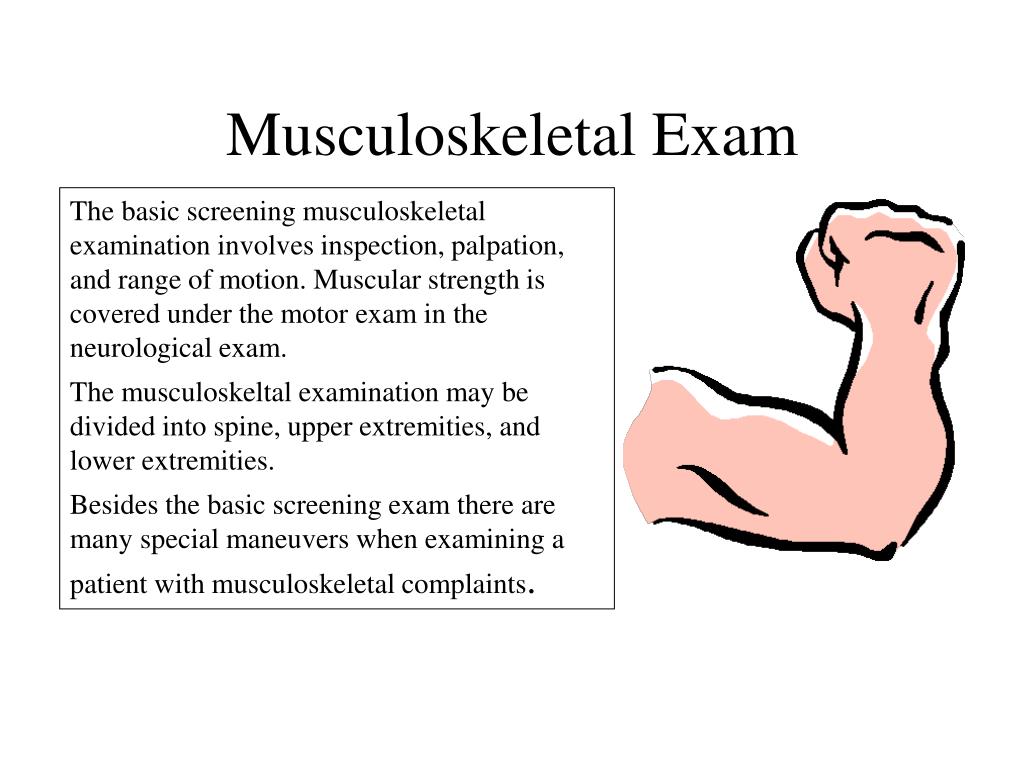
PPT Musculoskeletal Exam PowerPoint Presentation ID152673
Sample focused interview questions to include during a subjective assessment of the musculoskeletal system are contained in Table 13.4.1 13.4. 1. The first question of the musculoskeletal interview is based on the six most common symptoms related to musculoskeletal disease. [1]

Musculoskeletal Nursing Assessment MUSCULOSKELETAL SYSTEM NURSING
Document the assessment findings and report any concerns according to agency policy. This page titled 13.6: Checklist for Musculoskeletal Assessment is shared under a CC BY-SA 4.0 license and was authored, remixed, and/or curated by Ernstmeyer & Christman (Eds.) ( OpenRN ) via source content that was edited to the style and standards of the.

Assessment of musculoskeletal system YouTube
The musculoskeletal system (MSK) forms the structural components of the body; muscles, bones, joints, and connective tissues like tendons and ligaments surrounding these structures. The musculoskeletal examination is composed of several clinical tests. Broadly, a musculoskeletal system exam could classify as a:
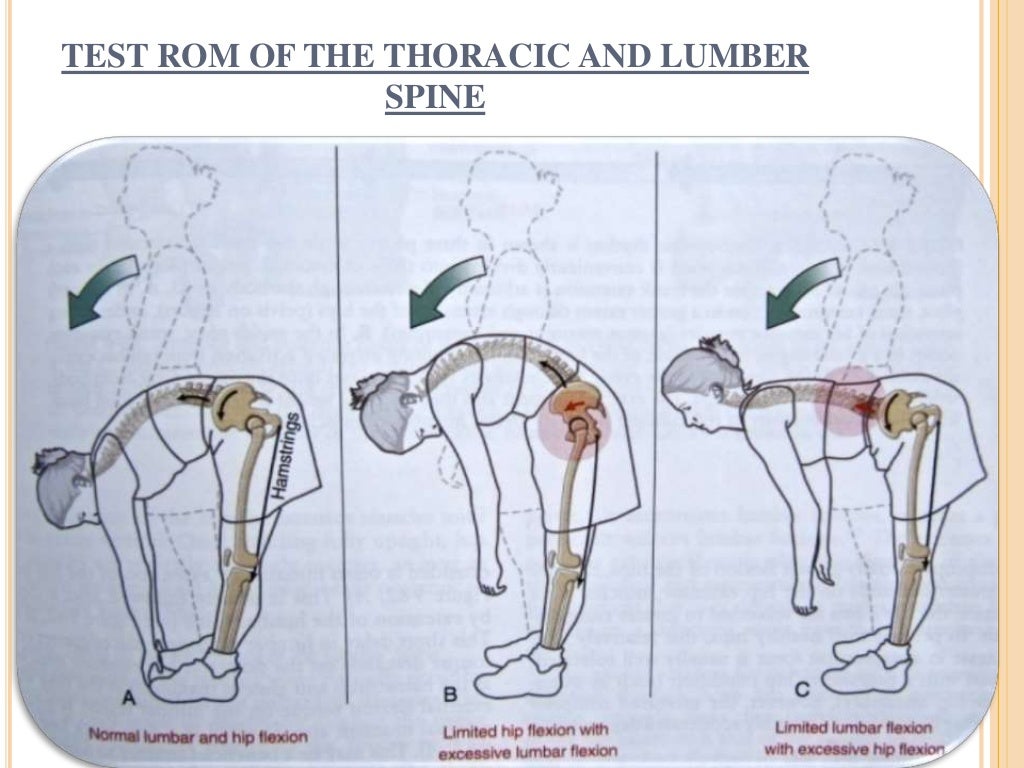
Physical Assessment of Musculoskeletal System
The screening musculoskeletal examination (SMSE) is designed to provide an introduction to the physical assessment of musculoskeletal structures and will enable you to recognize normal joint appearance and alignment, the spectrum of normal joint range of motion and will help you recognize basic abnormalities of musculoskeletal structure and func.
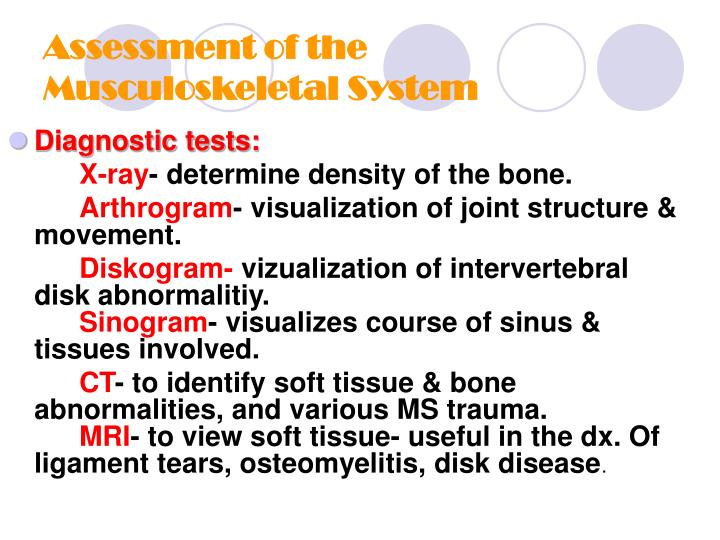
PPT Assessment of the Musculoskeletal System PowerPoint Presentation
The methods of assessment for the musculoskeletal system include inspection and palpation. There are also specialty tests for range of motion and muscle strength and tone.
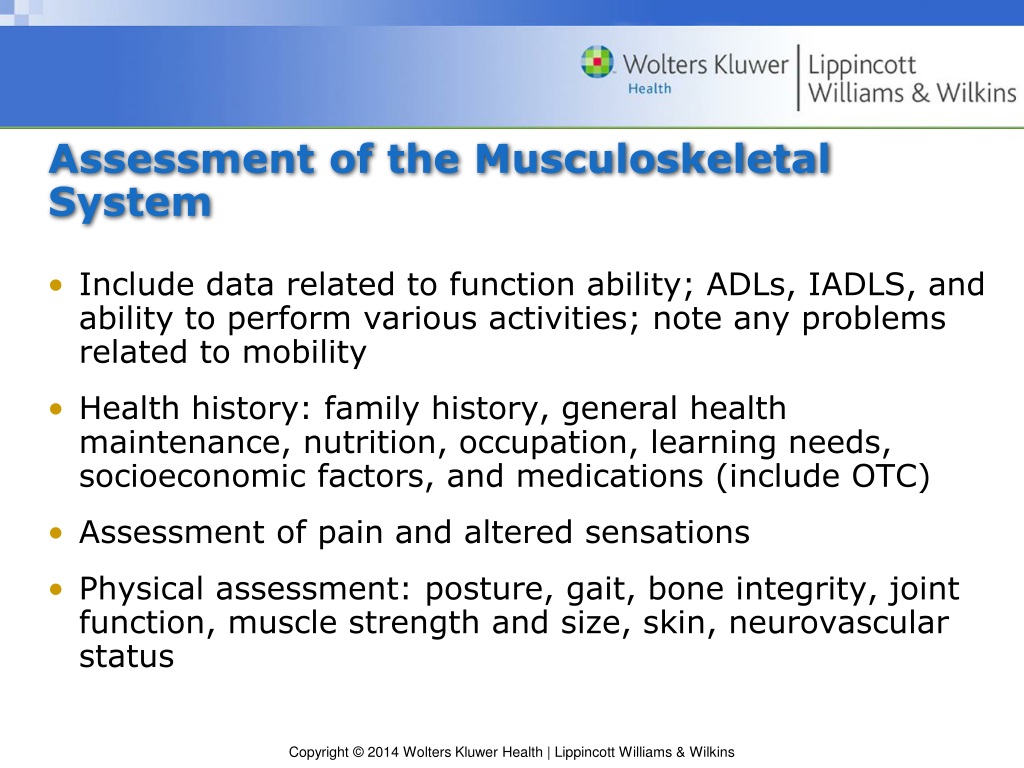
PPT Chapter 40 Assessment of Musculoskeletal Function PowerPoint
To perform an examination of the muscles, bones, and joints, use the classic techniques of inspection, palpation, and manipulation. Start by dividing the musculoskeletal system into functional parts.

Musculoskeletal Assessment PDF Electromyography Nursing
This chapter provides a comprehensive overview of the assessment of a patient's musculoskeletal system. The chapter adopts a systematic approach to holistic patient assessment including history taking, examination, clinical investigations, and use of patient-reported outcome measures.
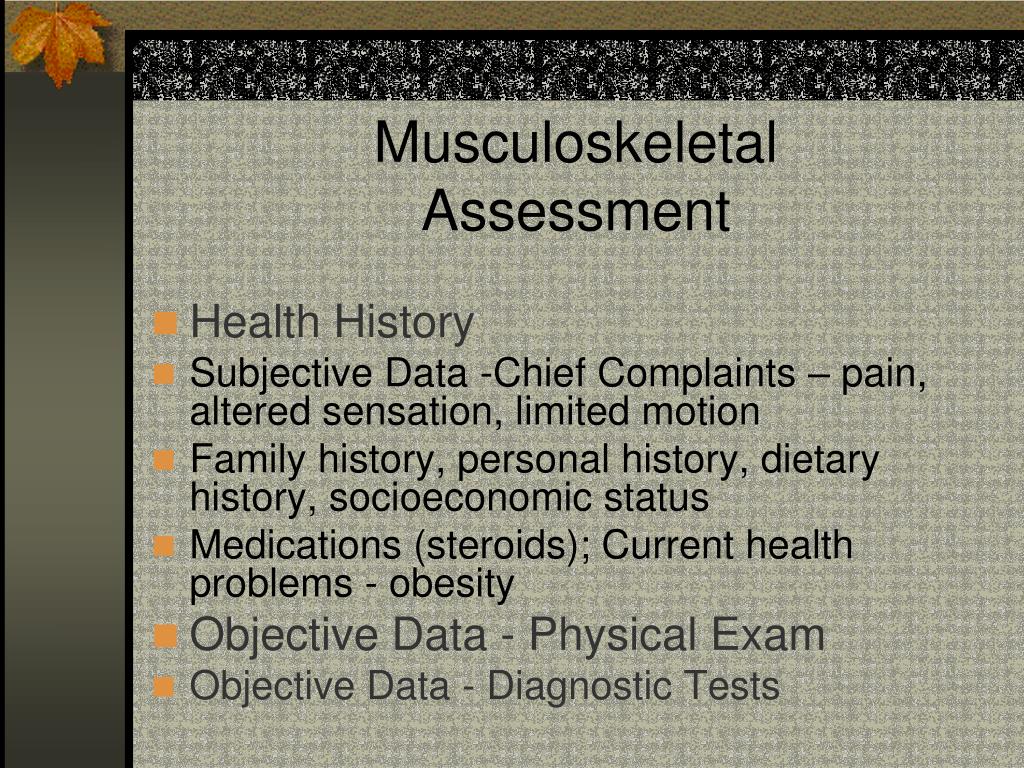
PPT Assessment of Musculoskeletal System PowerPoint Presentation
1. Collaborate with the physical and occupational therapists to perform a complete musculoskeletal assessment, including functional status, as needed. Health Promotion and Maintenance 2. Explain how physiologic aging changes of the musculoskeletal system affect care of older adults. Psychosocial Integrity 3.

standardized musculoskeletal examination procedures. Note The
The musculoskeletal system (locomotor system) is a human body system that provides our body with movement, stability, shape, and support. It is subdivided into two broad systems: Muscular system, which includes all types of muscles in the body. Skeletal muscles, in particular, are the ones that act on the body joints to produce movements.

13 Tips for Performing a Nursing Health Assessment of the
Step-by-step Assessment of the Musculoskeletal System Safety considerations: Perform hand hygiene. Check room for contact precautions. Introduce yourself to patient. Confirm patient ID using two patient identifiers (e.g., name and date of birth).

Musculoskeletal assessment Nursing school tips, Health assessment
Musculoskeletal/orthopaedic patient assessment is a process of appropriate subjective assessment with the understanding of particular joints , with use of specific tests at those particular joints and also appropriate subjective and objective markers along with understanding the need for continuous reassessment. [1] [2]

PPT Assessment of the Musculoskeletal System PowerPoint Presentation
Assessment of the musculoskeletal system should be completed during a comprehensive assessment or as part of a focused exam if your patient is experiencing issues with their musculoskeletal system. Methods of musculoskeletal assessment include inspection, palpation, and special tests.
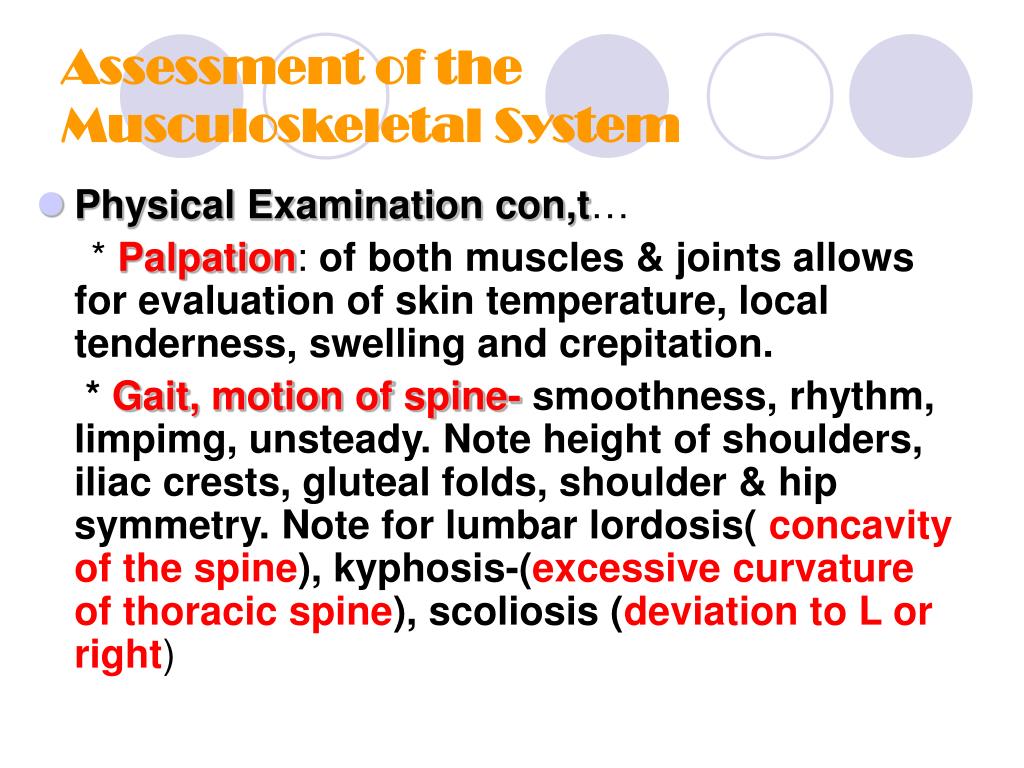
PPT Assessment of the Musculoskeletal System PowerPoint Presentation
Sample focused interview questions to include during a subjective assessment of the musculoskeletal system are contained in Table 13.4a. The first question of the musculoskeletal interview is based on the six most common symptoms related to musculoskeletal disease. [1] Table 13.4a Focused Interview Questions Related to the Musculoskeletal System
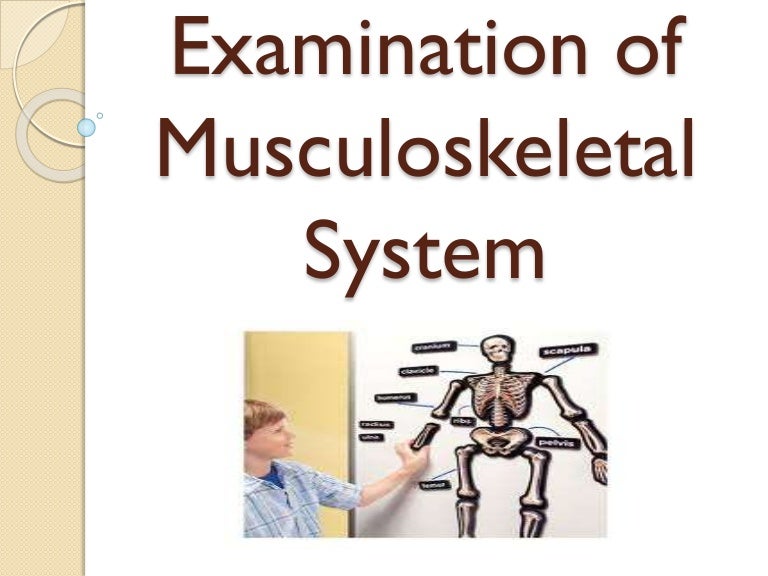
examination of Musculoskeletal system
4. Describe the functions of cartilage, muscles, ligaments, tendons, fascia, and bursae. 5. Link age-related changes in the musculoskeletal system to the differences in assessment findings. 6. Select significant subjective and objective data related to the musculoskeletal system that should be obtained from a patient. 7.

Assessment of Musculoskeletal System Osmosis Video Library
Such an assessment involves both static and dynamic assessment of musculoskeletal function. Movement of the lower limb involves interaction between the musculoskeletal and nervous systems. The function of both systems can be compromised by vascular pathology. This chapter concentrates on the orthopaedic assessment of the musculoskeletal system.
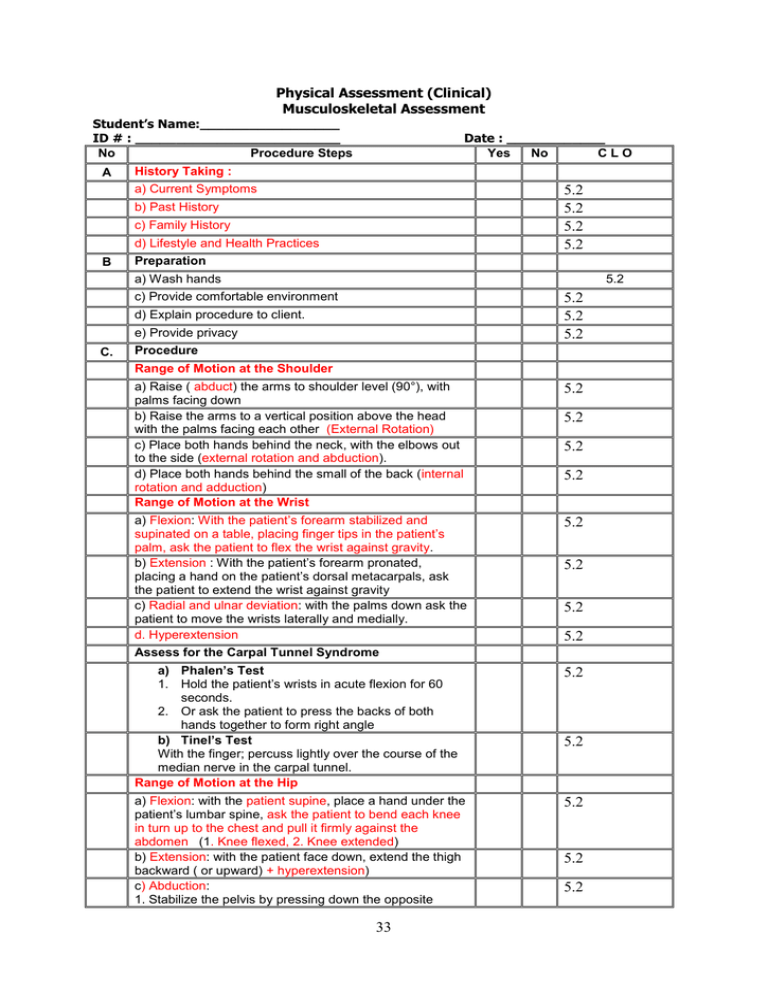
Musculoskeletal Assessment
The musculoskeletal system (MSK) is important to assess as it is considered the body's framework and supportive structure. It has additional roles such as hemopoiesis, and mineral and fat storage. See Figures 1 and 2 for an anatomical overview of the MSK system. Your assessment provides information about the functioning of this system and.